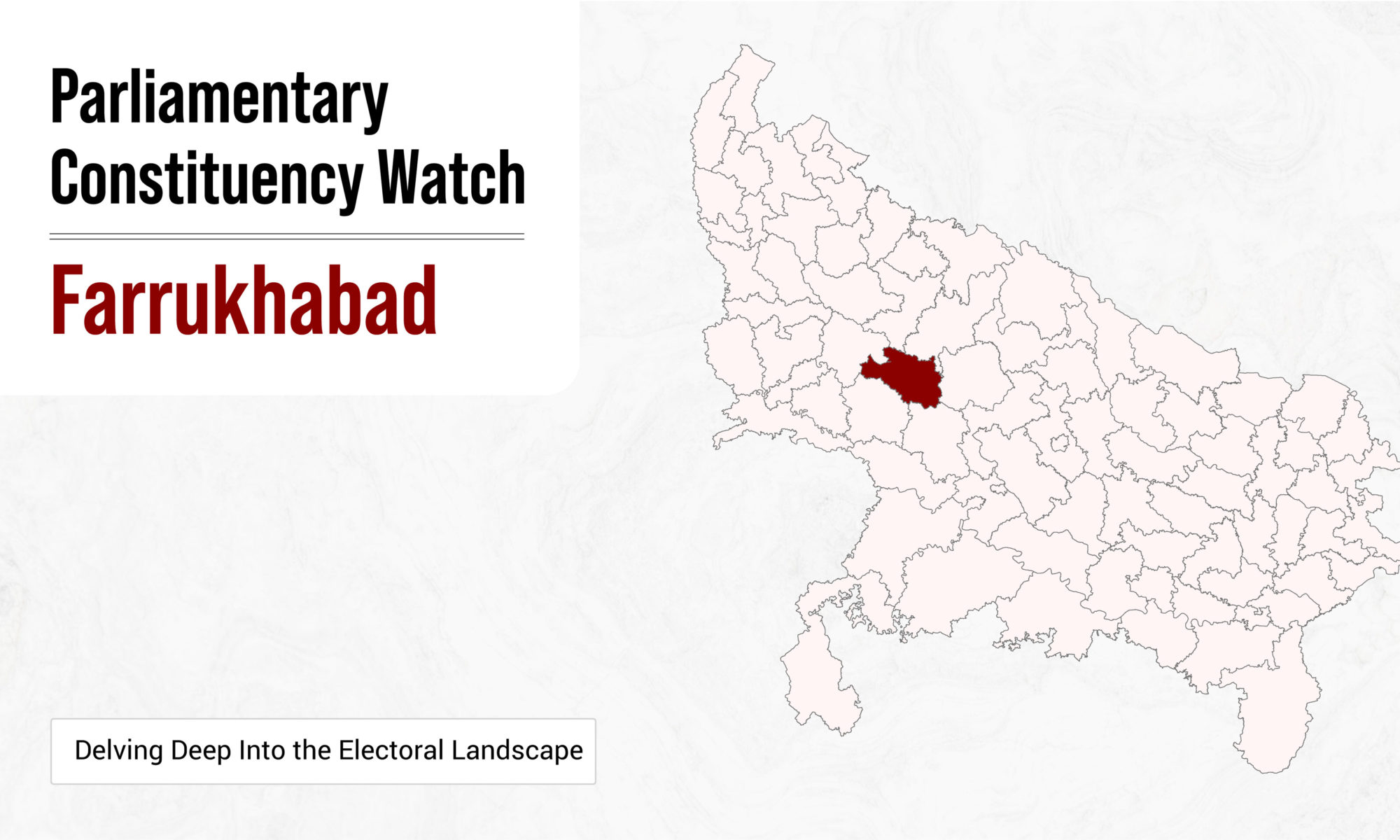Farrukhabad Lok Sabha constituency is one of the 80 Lok Sabha constituencies in the Indian state of Uttar Pradesh. It comprises 5 assembly constituencies and 2 districts.
Category
Designated as a General Constituency.
Voter Turnout
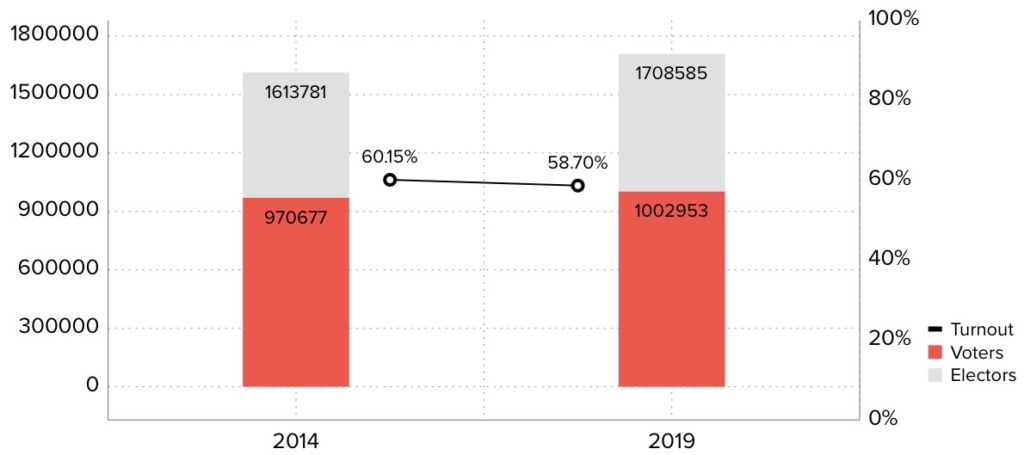
Farrukhabad Electoral Turnout Rates
During the 2014 elections, the total number of electors was 16,13,781 and the turnout stood at 60.15%, in real numbers- 9,70,677 voters. 2019 witnessed a turnout decrease; out of the 17,08,585 electors, 58.70% of voters exercised their constitutional rights. In real numbers- 10,02,953 voters.
Representation and Results
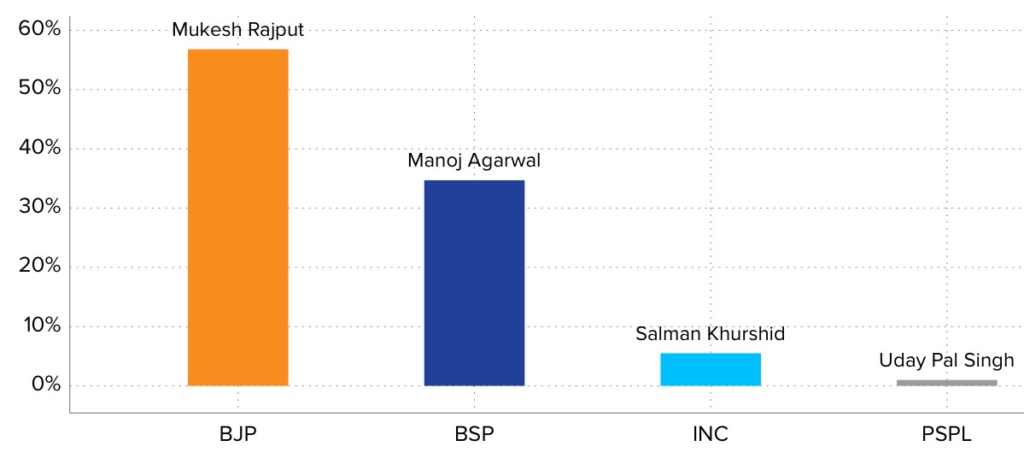
Party Wise Vote Share
2019’s parliamentary election winner, BJP’s Mukesh Rajput gained a vote share of 56.80% and defeated BSP’s Manoj Agarwal whose vote share stood at 34.70%. The other prominent candidates in the fray were INC’s Salman Khurshid with 5.505 of vote share and PSPL’s Uday Pal Singh with 1.00% of vote share.
Voting History –2014 & 2019

Party Wise Shift in Votes
In 2014, BJP won the constituency and earned 4,06,195 votes followed by 5,69,880 votes in the 2019 election victory. On the other hand, BSP garnered 1,14,521 votes in 2014 and 3,48,178 votes in the 2019 elections.
Parties at helm through the years
The Farrukhabad constituency has been represented by a number of different parties over the years.
In 1952, the Indian National Congress (INC) secured victory, setting the tone for successive INC wins in 1957, 1962. However, a by-election in 1962 resulted in a win for the Samyukta Socialist Party (SSP). The political landscape shifted in favor of INC again in 1967. It reclaimed the seat in 1971, followed by the Janata Party (JP) victory in 1977. The year 1980 saw another JP win, succeeded by the INC’s return in 1984.

Timeline of Winning Parties
The Janata Dal (JD) emerged victorious in 1989, and the INC regained power in 1991. The political dynamics shifted further with the Bharatiya Janata Party (BJP) winning in 1996 and 1998, while the Samajwadi Party (SP) secured victories in 1999 and 2004. The INC regained its position in 2009, and the BJP dominated the 2014 and 2019 elections.
Party-wise success rate
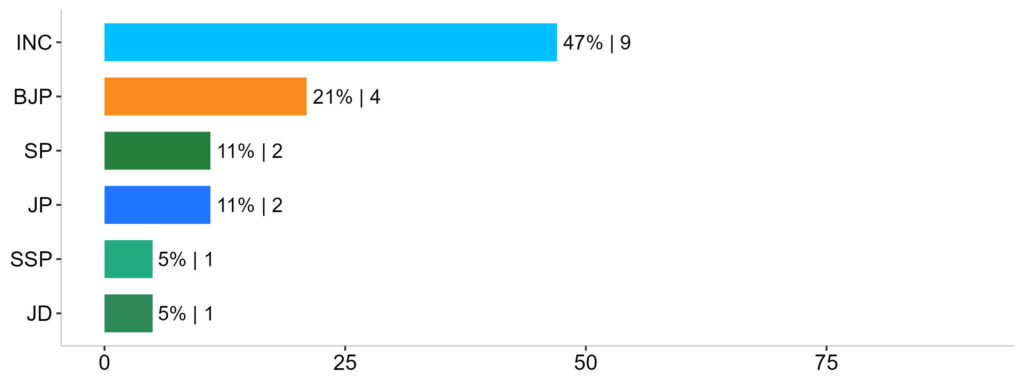
Success Rate
In terms of the success rate in securing the Farrukhabad Lok Sabha seat, both INC and the BJP had exhibited the highest rate of success over the years, standing at 47% and 21% respectively. Among other prominent parties, SP enjoyed a success rate of 11%.
Gender Wise Distribution of Contestants
During the 2009 elections, there were 16 contestants and 14 of them were male and 2 females, in percentage- 88% and & 12%. In 2014, the total number of contestants decreased to 22, out of which 20 were male and 2 were female, in percentage- 91% and 9%.

Gender Wise Distribution of Candidates
In 2019, on the other hand, the total number of contestants were decreased to 9 with all the participants being the male.
Gender wise voter turnout
In 2009, out of a total of 13,02,318 electors, 6,10,887 voters cast their ballots. Of the 7,19,817 male electors, 3,80,234 participated in the election, constituting a turnout rate of 53%. There were 5,82,501 female electors and of that, 2,30,653 chose to vote with a turnout rate of 40%.
In 2014, there are 16,13,781 people who are eligible to vote and 9,70,677 of them chose to exercise their right to vote. Out of these, 8,91,934 were male electors and 7,21,847 were female electors. 63% of male electors (5,60,566) and 57% of female electors (4,10,111) cast their ballots.
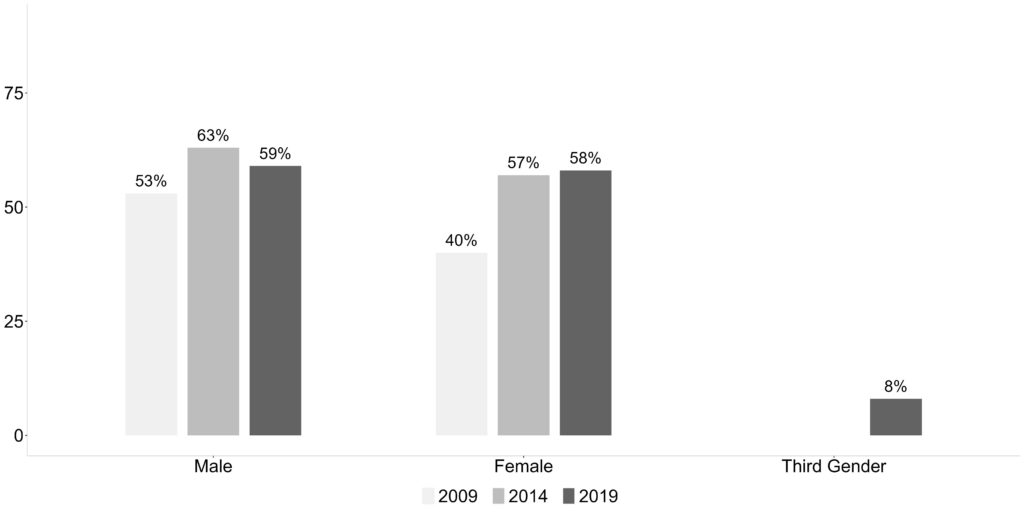
Gender Wise Voter Turnout
The total count of electors in 2019 was 17,08,585 out of which 10,00,373 chose to cast their ballot in the parliamentary elections. Out of 9,29,686 male electors, only 59% voted which is 5,51,171 male voters in real numbers. On the other hand, the voter turnout for females stood at 58% which translates to 4,49,196 voters out of a total of 7,78,822 female electors in real number.
In 2017, transgender people were included as a separate category of the third gender in electoral rolls. There were 77 electors belonging to the third gender category in the parliamentary constituency during the 2019 elections. And 6 of them exercised their newly granted constitutional right to vote and thus their turnout stood at 8%.
Gender-Wise Literacy Rate
We are taking a peek at the gender-wise literacy rate of the Farrukhabad and Kasganj (Kanshiram) districts which are part of the Farrukhabad parliamentary constituency as literacy is considered an essential indicator of the socioeconomic development of the region.
Farrukhabad District
The 2011 census of India has pegged the overall literacy rate of the Farrukhabad district at 58%. Gender-wise, the male literacy rate in the district is 65% whereas, for females, the literacy rate stands at 50%.

Gender Wise Literacy Rate
Etah District
The overall literacy rate of the district is 59%. However, when it comes to gender, the literacy rate for males in the district stands at 68% while the female literacy rate is 49%.
Stay updated on the electoral statistics for parliamentary constituencies and the changing dynamics on Meradesh App. Available on Appstore and Play Store.
Reach your constituents, gain insights into their motivations, and build campaigns based on data-driven strategies with the Meradesh Platform.
Data Source – Meradesh.org
